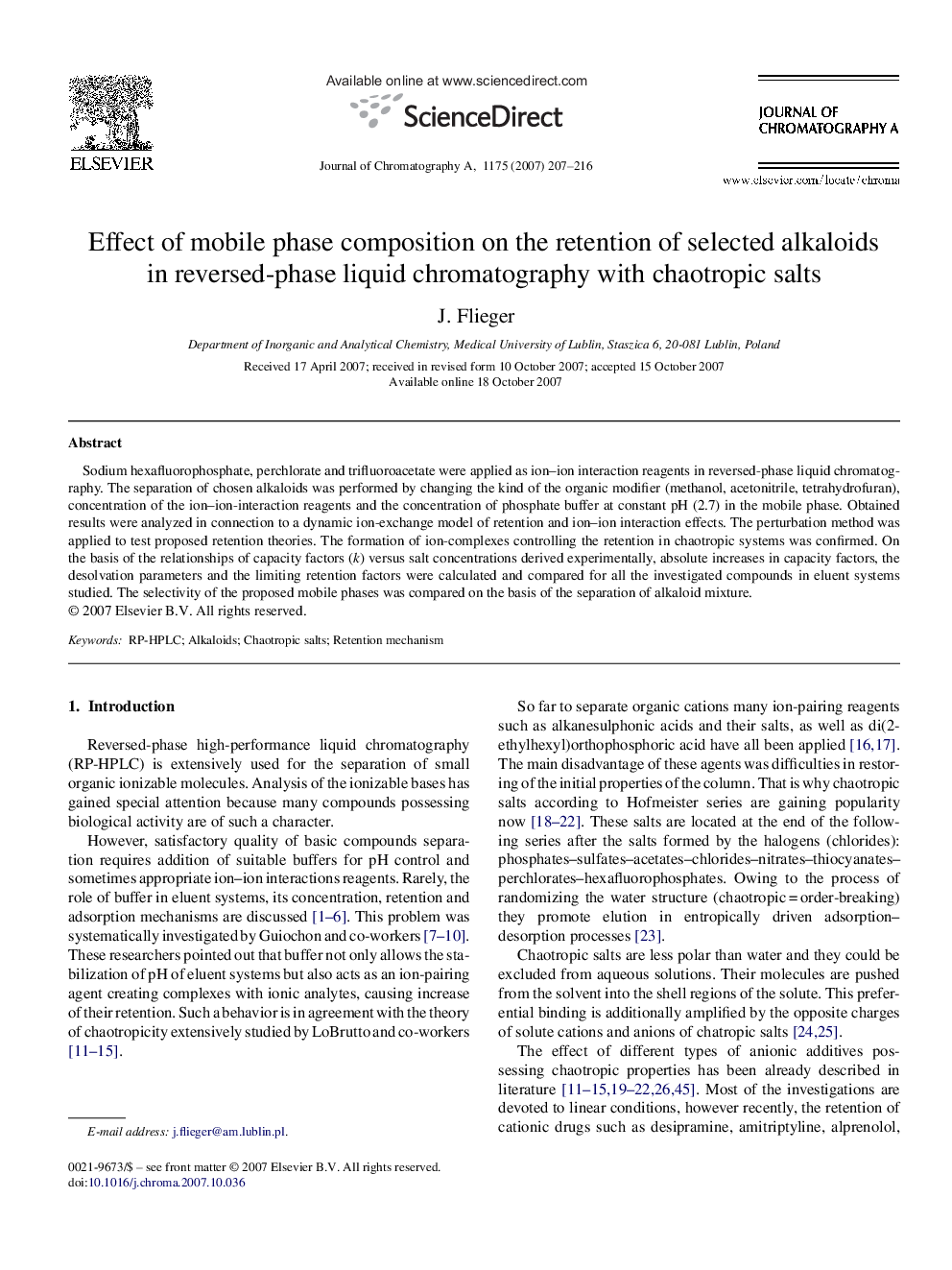| Article ID | Journal | Published Year | Pages | File Type |
|---|---|---|---|---|
| 1211024 | Journal of Chromatography A | 2007 | 10 Pages |
Sodium hexafluorophosphate, perchlorate and trifluoroacetate were applied as ion–ion interaction reagents in reversed-phase liquid chromatography. The separation of chosen alkaloids was performed by changing the kind of the organic modifier (methanol, acetonitrile, tetrahydrofuran), concentration of the ion–ion-interaction reagents and the concentration of phosphate buffer at constant pH (2.7) in the mobile phase. Obtained results were analyzed in connection to a dynamic ion-exchange model of retention and ion–ion interaction effects. The perturbation method was applied to test proposed retention theories. The formation of ion-complexes controlling the retention in chaotropic systems was confirmed. On the basis of the relationships of capacity factors (k) versus salt concentrations derived experimentally, absolute increases in capacity factors, the desolvation parameters and the limiting retention factors were calculated and compared for all the investigated compounds in eluent systems studied. The selectivity of the proposed mobile phases was compared on the basis of the separation of alkaloid mixture.
